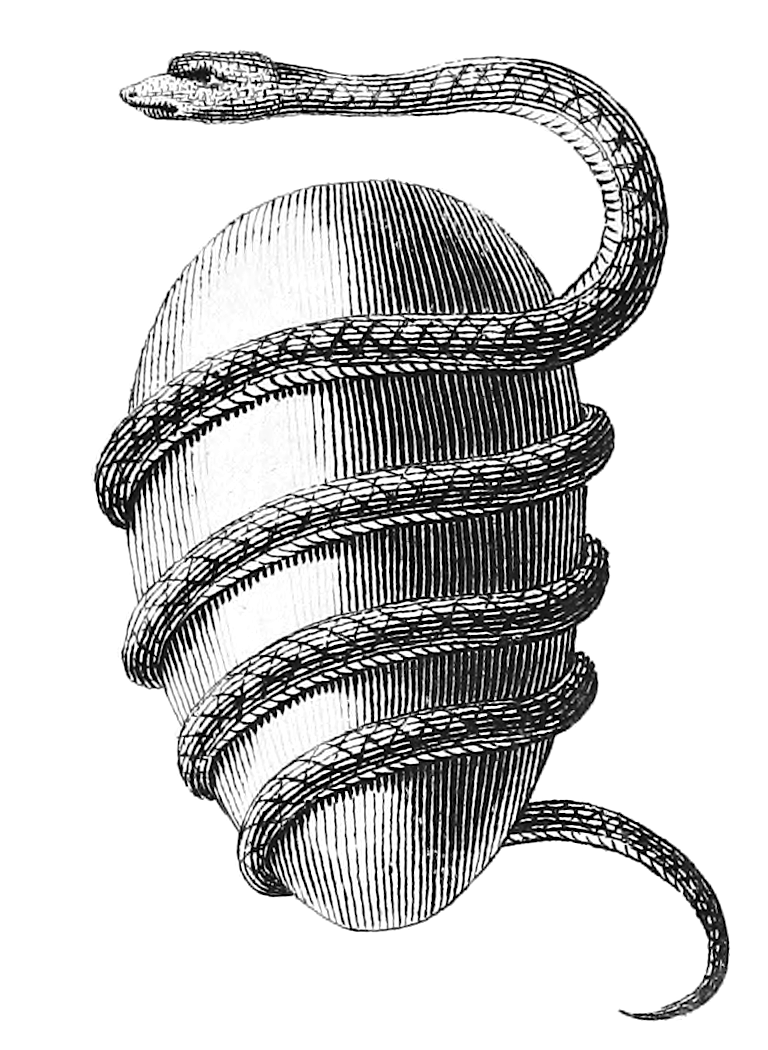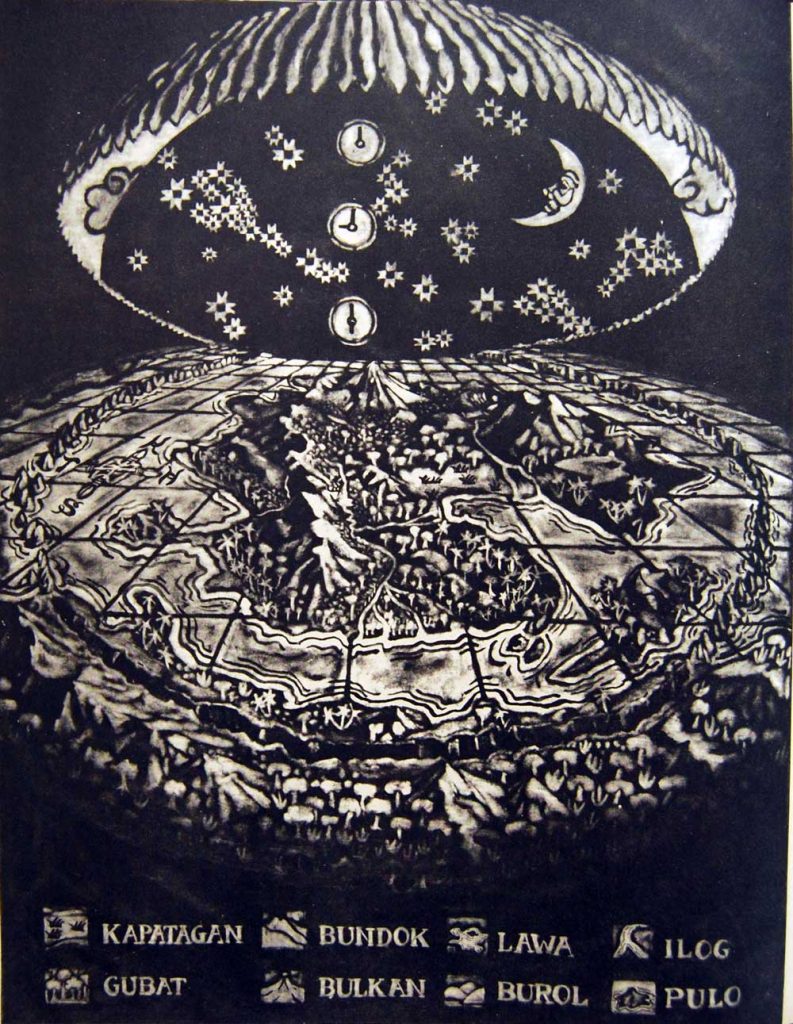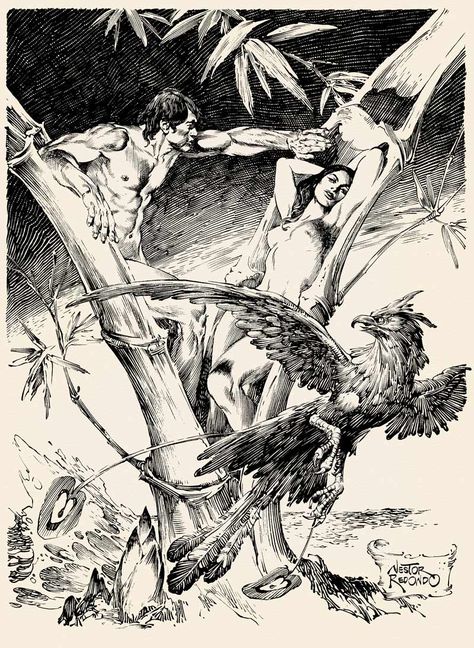Historians of religions inform us that in many mythologies, the egg is an archetypal symbol of world creation. Classical students are acquainted with the Orphic cosmic egg which was fashioned in the aither by Time, and out of which emerged the first great God Eros of Love (Phanes) who, as the principle of generation, became the creator of the whole world. But Phanes was swallowed in turn by Zeus who thereby became the ruler and creator of the world. We meet such myths over a very wide area: in Polynesia, India, Indonesia, Iran, Greece, Phoenicia, Latvia, Estonia, Finland, West Africa, in the central and the west coasts of South America.

What is of special interest is the fact that many myths of the creation of the first man and woman are patterned after the emergence of the cosmos from an egg. Man is believed to have been born from an egg, among the Oceanians. Among the Mandaya in Mindanao, the egg as the origin of the first man and the first woman is also found. This we shall discuss more fully below.
However, it is not only the coming to birth of man that is patterned after the cosmogony from an egg. The symbols of the renovation of nature and of vegetation (Spring and New Year) as well as the feasts and cults of the dead are also patterned after the symbolism of the world egg. And we know that this symbolism is not to be seen in any kind of birth, but rather rebirth. In other words, in all these myths and rituals connected with the tree, with the coming of spring and the new year as well as the feasts of the dead, the theory of eternal return to the beginning is exemplified. The beginning is the mythic time of creation. These myths and rituals wherein the motif of the egg is found, in the words of Eliade, “cannot be explained by any empirical or rationalist interpretation of the egg looked upon as a seed: it is found on the symbol embodied in the egg, which bears not so much upon birth as upon rebirth modelled on the creation of the world.” We cannot now go into a discussion of Eliade’s conception of a symbol. We refer the reader to his many writings on it.
Egg Motif in Philippine Creation Myths
As mentioned above, there are myths which exhibit the egg motif in the Philippines. Two versions of Mandaya myth clearly show this. The first version relates that the limokon bird laid two eggs. Out of the one was hatched the first woman Mag, and out of the other, the first man, Begenday. In the second version, two eggs were laid at the headwaters of the Mayo River. A woman emerged from the first egg. A snake was born out of the second. It later went downstream and at the mouth of the river, it blew up, and from its carcass the body of the first man came forth.
It must be mentioned, however, that the various myths as we have them do not explicitly indicate the symbolism of rebirth as modelled on the cosmogony. As a matter of fact, wherever the egg motif comes in, it is always a question of two eggs (one for the man and the other for the woman), not of one egg. It would seem that the Philippine myths would be much closer to the pattern of the cosmogonic egg. There is, however, an indication of the idea of rebirth in these myths because these creation myths are generally accompanied with flood myths. And invariably the flood myths contain reference to a bird or birds either as the first sons of the survivors, or as bringing in the matter for the formation of the earth from distant places, or as messenger of a god of the dead. We shall discuss the flood myths in another article.
There is, however, perhaps a Philippine myth which is patterned very much after the cosmogonic egg, but portrayed under another symbol. I refer to the early Bisayan myth which makes the first man and woman emerge full blown from the same bamboo joint, thanks to the accidental pecking by Manaul. Although it is not an egg laid by Manaul out of which the first man and woman are hatched, there is however a very positive action of the bird on the bamboo pole. First of all he alights upon it to catch his breath after his long flight, then he actually pecks at the bamboo when a lizard shows itself and the pecking may be likened. And the one joint of bamboo wherein were concealed the first man and woman could also be homologised with an egg shell containing within it two contrasting or opposite beings: man and woman, the masculine and the feminine. In this way, the myth seems to approach more closely the symbol of the cosmogonic egg, which before its “breakage” or creation, contained within itself the opposites: white and black, heaven and earth, night and day, death and life, masculine and feminine.

Nor is that all. Iloko legend seems also to have another myth which again runs along the same pattern of symbolism as the cosmogonic egg, with a difference. I refer to the myth of the giant Angngalo and his birth from the earth covered by the sky and which looked like a giant tabo or coconut shell-bowl as another variant of the cosmogonic egg, the breaking of which, meant the separation of the cosmogonic egg into two halves, the earth below and the heaven above. And the cosmic separation of the primordial feminine and the primordial masculine also establishes once and for all the dichotomy of male and female among human beings, animals and plants.
The Origin of the Mandaya
From the people of Mayo we learn that the limokon (a kind of dove), although a bird, could talk like a man. At one time it laid two eggs, one at the mouth and one at the source of the Mayo river. These hatched and from the one at the headwaters of the river came a woman named Mag, while a man named Begenday emerged from the one near the sea. For many years, the man dwelt alone on the bank of the river, but one day, being lonely and dissatisfied with his location, he started to cross the stream. While he was in deepwater, a long hair was swept against his legs and held him so tightly that he narrowly escaped drowning. When he succeeded in reaching the shore, he examined the hair and at once determined to find its owner. After wandering many days, he met the woman and induced her to be his wife. From this union came all the Mandaya.
Note: A variant of this tale says that both eggs were laid upstream and that one hatched a woman, the other a snake. The snake went down the current until it arrived at the place where the sea and the river meet. There it blew up and a man emerged from its carcass.

The Creation of the World (Visayan)
At a time many years ago—so long ago that man’s imagination can no longer reach it back—there was no land. All was an immense sea that nobody knew where it commenced or where it led to. Then the years and the ages passed.
Nobody knew where the sky or the earth or the wind or the clouds were.
There was a king who guided the destiny of space. This was King Manaul. He was tired and wanted to rest. There was no place where he could rest. He decided that the earth and the sky should wage war with each other. The war went on for a long time. Nobody knew how long it lasted. Thus the years dragged by. It was known that when the king blew with all its fury, it raised huge waves and nobody knew how far they reached above.
Tired, the king of the air, Manaul, clawed from the depths of the ocean many rocks which were so big that many people could neither raise nor move (any of) them. He lifted those rocks in the air and cast them below. He did this in various places to put an end to the war. Finally, he succeeded in separating the waves and the winds.
The rocks he had thrown below formed the lands of the islands of Iraya, one of which being that of Bugto, which is now known as the island of Negros.
There were neither trees nor plants and all got scorched in the heat of the sun. At that very moment, King Manaul wanted a place where he could rest from the heat of the sun.
So he called his general, Maguayan, who up to this time took the name of the plant, kawayan, spiny bamboo. The word spiny was mag at that time, meaning “One Most High.”
Maguayan afterwards went far away. He was away for a long time. At length he returned after many years. He immediately threw a piece of the spiny bamboo which floated on the water. The winds blew and the seas carried it to the island where it grew. The place was beautiful, so beautiful indeed, that King Manaul felt its charms. One day, while he sat alone under its (the spiny plant) branches, he heard some voice which came from inside the bamboo. He went near the bamboo plant and opened it with his beak. From one of the nodules came forth a man and from another, a woman. King Manaul named the former Sikalak, and the latter, Sikabay. And from those two came the other peoples from whom sprang mankind.

Sources:
MYTHS & SYMBOLS, Philippines, Fr. Francisco Demetrio S.J., 1979
PHILIPPINE FOLK LITERATURE: The Myths, Damiana Eugenio, UP Press, 2001
Patterns in Comparative Religion, Mircea Eliade, Bison Books, 1958
The Wild Tribes of Davao District, Mindanao, Fay-Cooper Cole, FIELD MUSEUM OF NATURAL HISTORY PUBLICATION 170, 1913
CONTINUE READING: The Flood Motif and the Symbolism of Rebirth in Philippine Myths
Jordan Clark is a Canadian born descendant of Scottish immigrants living on the homelands of the Lekwungen speaking peoples. His interest in Philippine myth and folklore began in 2004. Finding it difficult to track down resources on the topic, he founded The Aswang Project in 2006. Shortly after, he embarked on a 5 year journey, along with producing partner Cheryl Anne del Rosario, to make the 2011 feature length documentary THE ASWANG PHENOMENON – an exploration of the aswang myth and its effects on Philippine society. In 2015 he directed “The Creatures of Philippine Mythology” web-series, which features 3 folkloric beings from the Philippines – the TIKBALANG, KAPRE and BAKUNAWA. Episodes are available to watch on YouTube. Jordan recently oversaw the editing for the English language release of Ferdinand Blumentritt’s DICCIONARIO MITOLÓGICO DE FILIPINAS (Dictionary of Philippine Mythology) and is working on two more releases with fellow creators scheduled for release later this year. When his nose isn’t in a book, he spends time with his amazing Filipina wife of 20 years and their smart and wonderful teenaged daughter.


